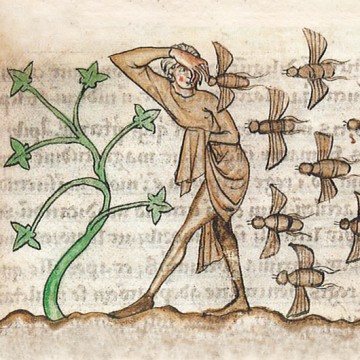
Animals, gardens, landscapes
International Landscape Study Days
2018, fourteenth edition
Thursday 15th and Friday 16th February
This year, the Study days promote a reflection on the relationship between animals and landscape, specifically on the role animals have always played in designing and caring for landscape and on their significance, either seen as allies or enemies. There will be opportunities to reflect on how to steer – perhaps with a less anthropocentric attitude than man has so far shown – our thinking and our actions towards a greater understanding of the forms of interaction between man and animals in the construction of the places where we live.
From the presence of fauna in the vocabulary of historical gardens, to the depictions of the animal kingdom in art, in zoological collections, in artificial landscapes, up to the most varied and necessary interactions with the built landscape – both urban and rural – of the contemporary world, animals will take centre stage in a comprehensive debate, with a number of contributions and a variety of viewpoints.
The first session – Animals in man’s gardens – tackles the theme of the relationship between animals and the garden dimension, retracing some historical milestones from the point of view of their presence: in defining spaces and their image, in constructing imagery and symbolic figures, in keeping alive the essential mechanisms of its operation, starting from work in the fields.
The second session – Animals on stage – spans from the large interactive fresco inherited from the garden to events closer to us, in which man has sought to establish a different closeness and forms of relationship. It is imperative to refer to the long history of zoos in the landscape of bourgeois towns, to subsequent forms of representation of the animal kingdom, currently amended in view of an environmental conscience that entails the reconstruction of habitats, still carefully plotted by man’s thought. The debate will focus on the sense of this discrepancy, also thanks to the testimonies of artists whose work explores the need for new relations with the animal world, and even the craft of taxidermists, whose handiwork is able to recreate that which has been destroyed by man.
Presentations that reflect ideas and experiences currently at play in contemporary society, will feed the third session, entitled Animals in the built landscape, which highlights contemporary man’s wish to establish alliances, complicity, strategic pacts with a view to greater mutual understanding.
The debate will touch on the perception of the rural landscape, on unusual forms of city care and maintenance – entrusted to urban sheep farming and bee keeping, for example – and on the construction of animal “dwellings” designed with a focus on respectful cohabitation rather than oppression. In this connection, the Dutch approach to design – which has always been guided by a consideration for the animal world – is an essential reference point of reference. Finally, the conclusion of the days will put forth a “return to the garden” to underline, from this purview, the need to look at the future with a greater emphasis on the relationship among living beings and their respective forms of communication. Gardens, just like landscape, have always been crossed by relationships based on power. When observed from animals’ viewpoint, gardens become a grounds for cohabitation and experimentation, helping us to cultivate tomorrow’s world.
